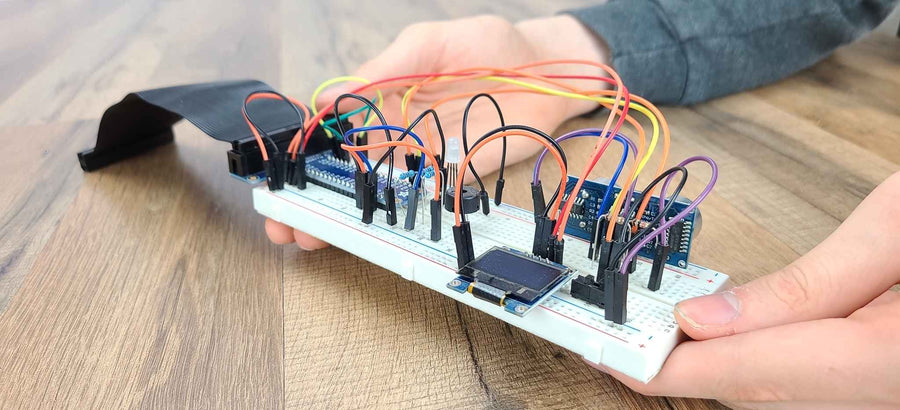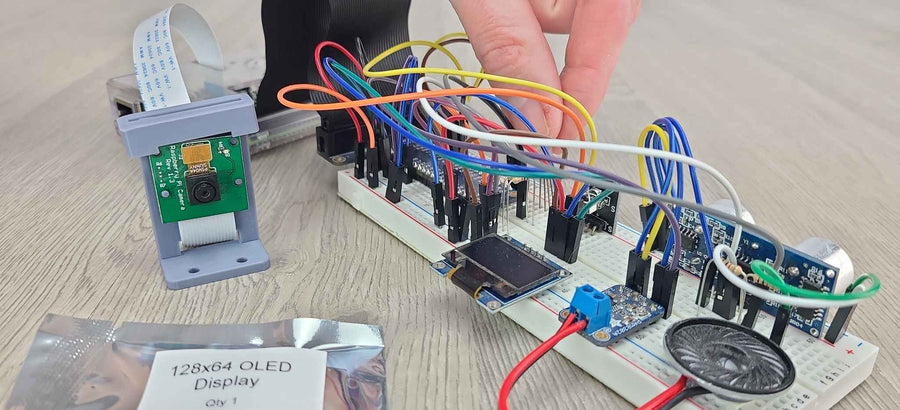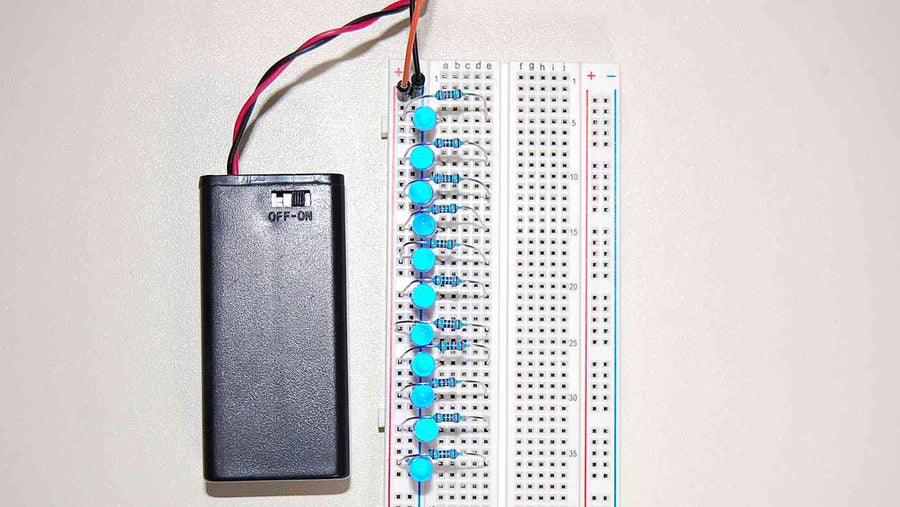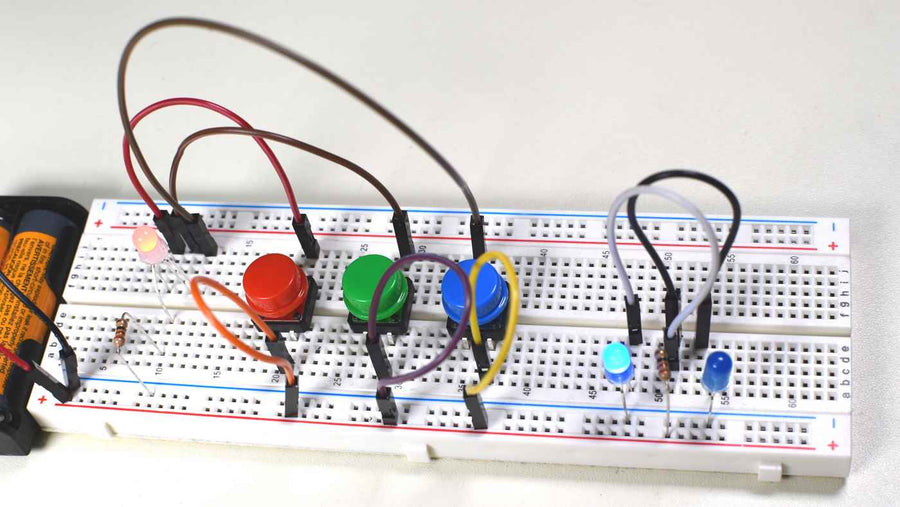Level A
What Will You Learn in the Electronics + Coding Standard Course?
This course is designed to start at the very beginning to systematically teach you to work with electronic components, use a Raspberry Pi, and write Python code. We then move on to teach you to work with a number of sensors as well as intermediate-level Python code commands.
What Will You Learn in the Raspberry Pi + Python Complete Course?
This course is designed to start at the very beginning to systematically teach you to work with electronic components, use a Raspberry Pi, and write Python code. We then move on to teach you to work with increasingly complex electronic components as well as both intermediate and advanced-level Python code commands.
Calculating Resistor Value
In the Intro to Robotics Level A kit, we include three different size (value) resistors which can be used for different projects. To read the value of a resistor, first determine how many bands your resistor has present. This will determine whether you use the four-digit code or the five-digit code.
Series vs. Parallel Circuits
While series circuits are simpler, they also have some significant limitations. Mainly that you would need a higher voltage battery to run anything more than a few simple components. Instead, circuits are normally run in parallel which allows the battery voltage to feed equally to all paths within the circuit.
Working with Basic Electronic Components
Level A of the Intro to Robotics program starts at the very beginning by teaching you to build breadboard circuits using common electronic components. This article contains excerpts from the first six Level A lessons briefly introduces breadboards, resistors, light emitting diodes (LED), jumper wires, switches, and red-blue-green (RGB) LED.
Ohm's Law
The voltage, current, and resistance in a circuit are mathematically related. Ohm’s Law can be used to determine the voltage, resistance, or current of any component in a circuit and comes in handy when designing your own circuits. We walk you through the math behind Ohm's Law in Lesson A-3 of the Intro to Robotics Program.
Learning to Troubleshoot
When working with electronics and code, effective troubleshooting skill are important. There's a running joke that 95% of coding is troubleshooting why the code you wrote isn't working. While funny, it's also essentially true. In Level A of our Intro to Robotics program, we teach you how to systematically troubleshoot.
How Do Resistors Work?
A resistor provides electrical resistance, limiting the flow of the electrons through the circuit. This can not only prevent a short circuit, but also slowing the current keeps electrical components like LEDs, fans, light bulbs, etc. in the circuit safe from too much or too little current.
What is a Raspberry Pi?
The Raspberry Pi is a small, single-board computer developed in the United Kingdom for the purpose of providing an affordable computer so people all over the world could learn to create computer programs. The Raspberry Pi is a great option for home based electronics and robotics projects.
Coding for Loops in Python Programs
Sometimes in a program, you might want to do the same thing multiple times. For example, maybe you want to print the word ‘apple’ 50 times? You could write 50 print statements in a row, but there is a much better way to accomplish the same outcome using a loop. The circuit pictured is controlled via a loop program.
What is Forward Voltage?
Forward voltage (Vf) is the minimum amount of voltage that is required to allow an LED, or other electronic component, to turn on. In Lesson A-2 of our Intro to Robotics program, we teach you to build simple electrical circuits and how to factor in forward voltage for the components you are working with.
What Will You Learn in Level A?
Level A starts at the very beginning and systematically teaches you to work with electrical components to build circuits, use a Raspberry Pi, and write common code commands in Python (the fastest growing computer programming language). Level A is perfect for beginners and can be used by adults, high school students, or middle school students.












